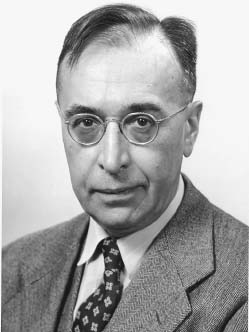Gregory Breit was an American physicist who supervised the early design of the first atomic bomb in what would later become the Manhattan Project.
Breit, who studied electrical engineering at Johns Hopkins University, joined Merle Tuve at the Carnegie Institution of Washington and helped develop a technique to determine the height of the ionosphere, a technique important later in radar development. Breit also worked with Eugene Wigner and Edward Condon on particle resonant states; he is credited with deriving the Breit equation.
In 1934, Breit and John Wheeler worked together on light studies, developing the Breit-Wheeler process by which pure light can be potentially transformed into matter.
In April 1940, Breit proposed to the National Research Council that American scientists censor their work due to the possibility of their work being used for military purposes by enemy powers during World War II.
Breit was chosen by Arthur H. Compton to supervise early work on the atomic bomb. However, Breit resigned his position the next year, frustrated by the lack of progress and the security breaches on the project. His job ultimately went to Robert Oppenheimer, who was later appointed scientific director of the entire project.
Breit instead went to Aberdeen Proving Ground (and Johns Hopkins) to work on the proximity fuze and later on exterior ballistics.





